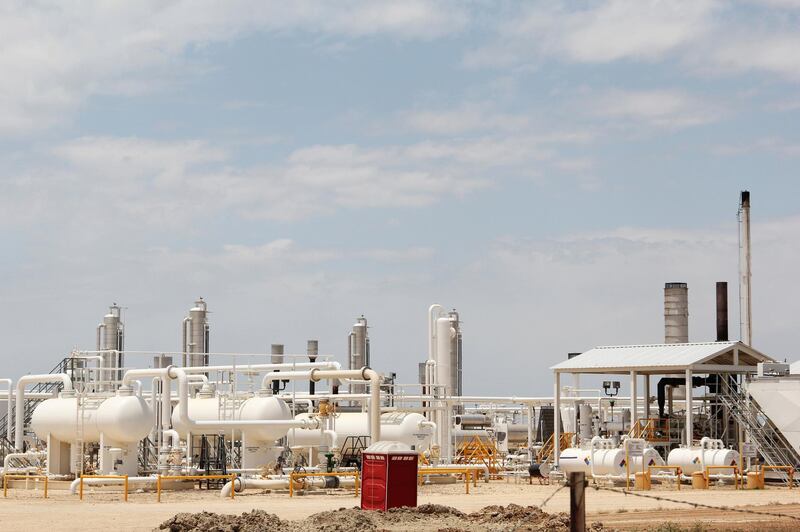US rig counts reached their highest level in two years last week, signalling a resurgence in US shale oil output after prices rose following an agreement by Opec and producers outside the group to extend production cuts well into the next year.
Total rig counts in the US rose 55.6 per cent year-on-year to 929 for the week ending Friday from 597 for the same period last year, according to data from US oil services firm Baker Hughes.
Rig counts supporting production from the Permian, the largest producing shale field in North America, marked a similar increase, rising to 397 last week from 235 for the same time last year.
The agreement to slash production by 1.8 million barrels per day (bpd) by Opec and non-Opec producers from the beginning of the year has managed to bolster oil prices that fell to just below $29 per barrel at the beginning of last year to $50 levels through much of 2017. The price of Brent touched a two-year high of $64 per barrel early last month following the Kurdish referendum vote that upset supply lines from the region.
_____________
Read more:
[ Opec agrees to extend oil production cuts to end of next year ]
Business Extra Podcast: The return of Opec's influence but how long will it last?
Libya to open office in Houston as it looks to US support on oil
Exclusive: US oil boom both curse and blessing for Middle East producers
_____________
"[Opec] would be keeping a wary eye on the US shale sector's response if WTI [West Texas Intermediate] remains well supported above $50," said Vandana Hari, the founder and chief executive of Vanda Insights.
The steadying of oil prices has brought investment confidence back to shale producers in the US who were hit hard by the oil price crunch, when Opec flooded the market with sustained output to squeeze out competition from high-cost producers.
The North American shale oil market, however, has proved resilient to price changes, with US operators adapting to the fluctuations and preparing to spud when the market was poised for recovery.
Shale’s resurgence is set to continue to plague Opec’s efforts at adjusting the market and reaching a price favourable to balancing the budgets of Arabian Gulf economies.
“US production is expected to continue growing, but the increase moderated considerably as the year progressed – projected to average 377,000 bpd higher in 2017 versus 2016 as per the Energy Information Administration’s (EIA) latest monthly report,” said Ms Hari.
“The EIA expects 2018 growth to be stronger at 711,000 bpd. If that proves to be the case, the impact of the Opec/non-Opec cuts could remain a slow process.”
While the EIA last month surprised markets with their estimation of US production's pick-up to 9.72 million bpd by the end of the year, the Oslo consulting firm Rystad Energy projects growth to reach 9.9 million bpd.
“We conclude that the downside risk to the EIA’s 9.72 million bpd figure is nearly non-existent,” the advisory firm said last month.
“With average capacity additions of 100 thousand bpd per month and the resolution of outages, production should swing quite strongly upwards by year-end. We think the EIA will have to lift their year-end estimates by 150,000 bpd,” it added.
With production at 9.9 million bpd, US shale production is set to match Saudi Arabia’s output of 10 million bpd.







